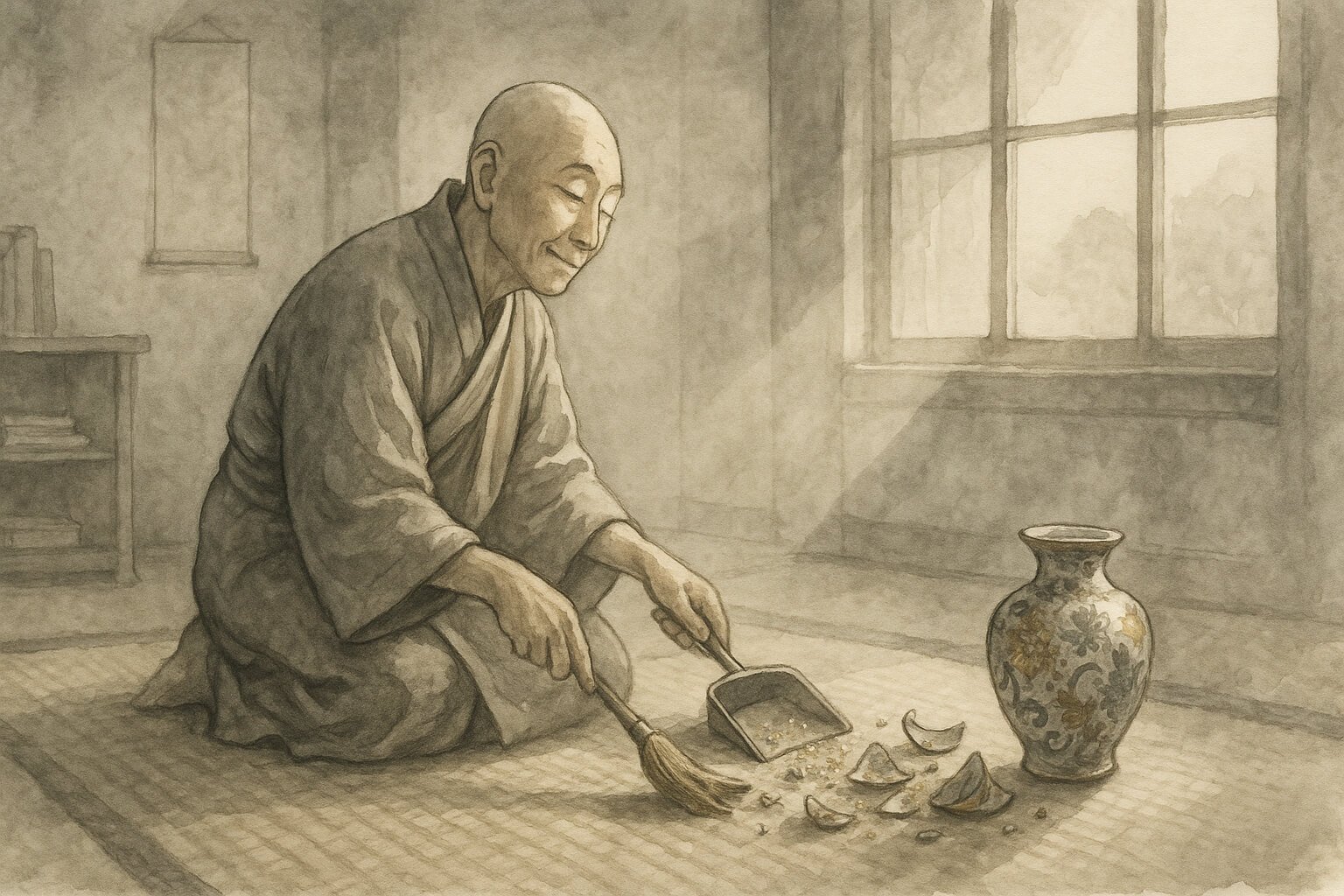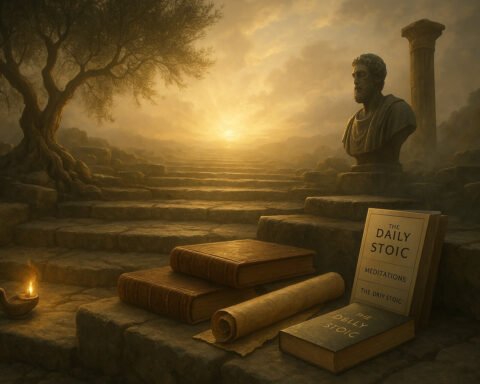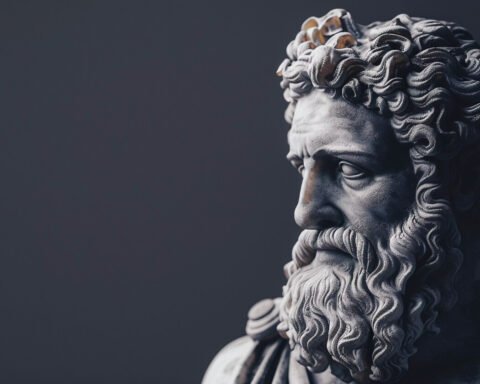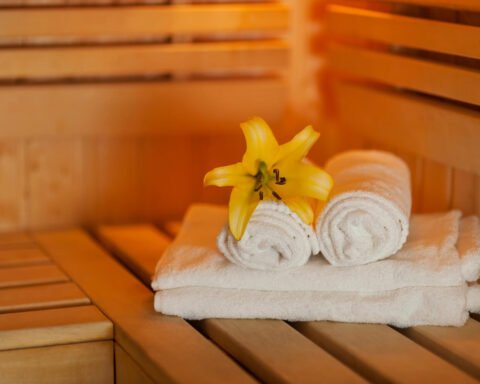Table of Contents
The Vase Already Broken: A Parable of Anxiety and Attachment
Anxiety without reason is like living with a vase that you know will someday break. In ancient China, a Buddhist teacher cherished a rare porcelain vase, adorned with jewels and gifted by a dear friend. Visitors admired it, and the teacher beamed with pride. One day, a clumsy guest shattered the vase into glittering shards. The guest braced for anger—but the teacher simply hummed a tune, swept the fragments, and smiled.
“Master,” the guest stammered, “aren’t you upset? Didn’t you love that vase?”
The teacher replied, “Of course, I loved it. Every morning I watched the sunlight dance on its stones, and I felt gratitude for my friend. But in my mind, from the very first day, the vase was already broken.”
This story captures the essence of non-attachment and reveals something profound about anxiety without reason. Like the guest, many of us live in fear of breaking what we love — our careers, relationships, health, reputation. And yet, even when nothing has happened, anxiety gnaws at us.
According to the World Health Organization, 264 million people suffered from anxiety disorders as of 2017 — and that was before 2020 reshaped our lives. But beyond clinical diagnoses, there’s a quieter epidemic: everyday anxiety. That vague, restless hum of dread with no clear source. If you’ve ever asked yourself: “Why am I so anxious for no reason?” — you are not alone.
The good news? Ancient wisdom and modern psychology converge to offer practical tools for calming the anxious mind.
The Hidden Roots of Anxiety Without Reason
The Evolutionary Mismatch
Our brains were designed for life in small Stone Age tribes. Survival depended on knowing everyone in the group and being wary of strangers. Fast forward to today: we live in sprawling cities and scroll through thousands of faces daily. Social media bombards us with “threats” to status, belonging, and success.
This evolutionary mismatch means our Stone Age wiring is overwhelmed by modern complexity. What once was useful vigilance now mutates into chronic, unexplained anxiety.
Studies show that rapid environmental change stresses our psychology and contributes to modern anxiety:
- Evolutionary Mismatch Might Be Why We Struggle in Today’s World
- Two Different Mismatches: Integrating the Developmental and the Evolutionary-Mismatch Hypothesis
The FOMO Pandemic: Fear of Missing Out Psychology
Why does scrolling Instagram feel like an assault on our peace? Psychologists call it FOMO psychology — the fear of missing out. Social feeds showcase a polished version of reality: vacations, successes, milestones. We compare our behind-the-scenes life to everyone else’s highlight reel.
This constant comparison sparks envy, inadequacy, and modern anxiety. We feel that life is slipping by, that we’re not living enough. The irony? In chasing validation, we create the very emptiness we fear.
Social media addiction and FOMO further worsen mental health outcomes.
The Second Arrow: A Buddhist Lens on Anxiety
Buddha taught that pain is inevitable, but suffering is optional. He illustrated it with the parable of the two arrows.
- The first arrow is life’s pain: a job rejection, a breakup, a lost phone.
- The second arrow is our reaction: self-blame, rumination, “why me?” thinking.
Much of our “anxiety without reason” is actually the second arrow — our mind wounding itself long after the event, or even in anticipation of one that hasn’t happened.
The Stoic Toolkit: Ancient Practices for Modern Anxiety
The Dichotomy of Control (Epictetus)
Epictetus taught: “Some things are up to us, others are not.” Our thoughts, choices, and actions are ours. Outcomes, reputations, and other people’s opinions are not.
Example: Before a job interview, you can research the company, prepare answers, and dress well. But whether the manager is in a bad mood? Out of your hands.
Exercise:
- List your current worries.
- Divide them into two columns: Within My Control / Beyond My Control.
- Release what’s outside your power. Focus energy only on what’s within it.
This simple act reframes anxiety into clarity.
Premeditatio Malorum (Seneca’s Antidote)
The Stoics practiced Premeditatio Malorum, or “premeditation of evils.” Imagine the worst that could happen — not as pessimism, but as mental vaccination.
Exercise:
Think of an upcoming event that triggers dread (asking for a raise, giving a speech). Write down the worst possible outcomes. Look at them closely. Most will shrink under scrutiny. In reality, the true risk is far smaller than the monster your mind created.
Focus on Today: One Day at a Time
A man named John vowed never to drink for a whole year. The promise crushed him — 364 days loomed ahead. But the solution was Stoic: don’t wrestle with a lifetime. Win today. Then win tomorrow.
Practical wisdom: When anxiety balloons at the scale of “forever” shrink it to “today.”
Frequently Asked Questions
Is it normal to have anxiety for no reason?
Yes. Often, what feels like “no reason” has roots in hidden stressors, evolutionary wiring, or self-inflicted “second arrows.” It is common and manageable.
What is the FOMO psychology behind social media anxiety?
Fear of missing out psychology (FOMO psychology) explains how curated feeds trigger comparisons, leading to envy and anxiety that we’re not living fully.
How can Stoicism help with anxiety?
Stoicism teaches the dichotomy of control (focus on what you can change), premeditatio malorum (mentally rehearsing challenges), and daily presence. Together, these tools calm uncertainty and build resilience.
How do I stop anxiety without reason?
You may never erase anxiety completely — it’s part of being human. But practices like mindfulness, Stoic exercises, and limiting social comparison can significantly reduce its grip.
Conclusion: The Vase Already Broken
The Chinese teacher loved his vase, but in his mind it was already broken. He embraced beauty without clinging to permanence.
So too with our lives: careers, relationships, possessions — each is fragile. Anxiety without reason arises when we try to hold them forever. Stoicism teaches us to master what we can control — our judgments and choices. Buddhism reminds us to stop shooting the second arrow.
The antidote is not eliminating anxiety, but transforming our relationship to it.
👉 Your call to action: Choose one tool today. Make a worry list, practice premeditatio malorum, or simply notice the second arrow. One step is enough.
And remember: the vase is already broken — so love it fully while it lasts.
Stoicism and Buddhism both teach us that anxiety fades when we master our judgments. For further reading, see our article on Epictetus and Marcus Aurelius’ best Stoic books that continue to inspire timeless calm in turbulent times.






